Text
✨ HOW TO ACTUALLY START A BOOK

(no ✨vibes✨, just structure, stakes, and first-sentence sweat)
hello writer friends 💌 so you opened a doc. you sat down. you cracked your knuckles. maybe you even made a playlist or moodboard. and then… you stared at the blinking cursor like it personally insulted your entire bloodline.
here’s your intervention. this post is for when you want to write chapter one, but all you have is aesthetic, maybe a plot bunny, maybe a world idea, maybe nothing at all. here’s how to actually start a book, from structure to sentence one.
—
🌶️ STEP 1: THE SPICE BASE ~ “WHAT’S CHANGING?”
start with this question:
what changes in the protagonist’s life in the first 5–10 pages?
doesn’t have to be earth-shattering. they could get a letter, lose a job, run late, break a rule, wake up hungover in the wrong house. what matters is disruption. the opening of your book should mark a shift. if their day starts normal, it shouldn’t end that way.
🏁 opening chapters are about motion. forward movement. tension. momentum. if nothing is changing, your story isn’t starting, you’re just doing a prequel.
—
⚙️ STEP 2: THE CRUNCHY BITS - CHOOSE AN ENTRY POINT
there are 3 classic places to start a novel. each one works if you’re intentional:
The Day Everything Changes most popular. you drop us in right before or during the inciting incident. clean, fast, efficient.
pro: immediate stakes con: harder to sneak in worldbuilding or character grounding
The Calm Before the Storm starts slightly earlier. show the character’s “normal” life, then break it. useful if the change won’t make sense without context.
pro: space to introduce your character’s routine/flaws con: risky if it drags or feels like setup
The Aftermath drop us in after the big event and fill in gaps as we go. works well for thrillers, mysteries, or emotionally heavy plots.
pro: instant drama con: requires precision to avoid confusion
📝 pick one. commit. don’t blend them or you’ll write three intros at once and cry.
—
🧠 STEP 3: CHARACTER FIRST, ALWAYS
readers don’t care about your setting, your magic system, or your cool mafia politics unless they’re anchored in someone.
in the first scene, we need to know:
what this person wants
what’s bothering them (externally or internally)
one trait they lead with (bold, anxious, calculating, naive, etc.)
that’s it. just one want, one tension, one vibe. no bios. no monologues. no “they weren’t like other girls” essays. put them in a situation and show how they act.
—
⛓️ STEP 4: OPEN WITH FRICTION
first scenes should create questions, not answer them.
there should be tension between:
what the character wants vs. what they’re getting
what’s happening vs. what they expected
what’s being said vs. what’s being felt
you don’t need a gunshot or a car crash (unless you want one). you need conflict. tension = momentum = readers keep reading.
—
✏️ STEP 5: WRITE THE FIRST SENTENCE - THEN IGNORE IT
okay. now you write it.
no pressure. you’re not tattooing it on your soul. this isn’t the final line on the final page. you just need something.
tricks that work:
start in the middle of an action
start with a contradiction
start with something unexpected, funny, or sharp
start with a small lie or a weird detail
💬 examples:
“The body was exactly where she’d left it - rude.” “He was already two hours late to his own kidnapping.” “There was blood on the welcome mat. Again.” “They said don’t open the door. She opened it anyway.”
once you’ve got it? keep going. don’t revise yet. don’t edit. just build momentum.
you can come back and make it ✨iconic✨ later.
—
📦 BONUS: WHAT NOT TO DO IN YOUR OPENING
don’t start with a dream
don’t info-dump lore in paragraph one
don’t give me three pages of your OC making toast
don’t try to sound like a Victorian cryptid unless it’s on purpose
don’t introduce 7 named characters in one scene
don’t start with a quote unless you are 800% sure it slaps
be weird. be sharp. be specific. aim for interest, not perfection.
—
🏁 TL;DR (but make it ✨useful✨)
something in your MC’s life should change immediately
pick a structural entry point and stick to it
give us a person, not a setting
friction = good
first lines are disposable, just make them interesting
and if you needed a sign to just start the damn book, this is it.
💌 love, -rin t.
P.S. I made a free mini eBook about the 5 biggest mistakes writers make in the first 10 pages 👀 you can grab it here for FREE:
3K notes
·
View notes
Text
Writing Notes: Story Plot
Plot - is what happens in a story.
Every story is made up of both events and characters.
A story happens because a pattern is interrupted.
If you are writing about a day that is like any other day, it is most likely a routine, not a story.
A Strong Plot
Centered on one moment—an interruption of a pattern, a turning point, or an action—that raises a dramatic question, which must be answered throughout the course of the story. This is also known as plot A.
Every element of the plot—each scene, each line—exists in service of answering that question. There are myriad plot devices that can bolster the main story; these are considered subplots.
7 Types of Plots
The nature of the dramatic question informs the plot and what kind of story it will be. Are the characters threatened by something external or internal? What genre will the story be?
Tragedy
Your main character should undergo a major change of fortune — almost always from good to bad, happy to sad.
Tragic characters have to suffer.
Comedy
Even though your characters have defects, their defects should never wind up being painful or destructive.
Comic characters make it through unscathed.
Hero’s Journey
The hero of a story must undergo two things:
Recognition and reversal of a situation.
Something has to happen from the outside that inspires the hero in a way that he/she didn’t realize before.
Then he has to undertake a quest to solve the situation.
Rags to Riches
Remember Cinderella? The classic fairy tale follows a simple rags-to-riches plot:
the protagonist is downtrodden, impoverished, or otherwise struggling, and through a series of events—either magical, like in Cinderella, or more realistic, like in Great Expectations — achieves success.
This type of plot often features a happy ending.
Rebirth
The rebirth style of plot follows a character’s transformation from bad to good.
The character will frequently have a tragic past that informs their current negative view of life, however, a series of events (usually set in motion by the protagonist or a narrator) will help them see the light.
See: Scrooge in A Christmas Carol, or the Beast in Beauty and the Beast.
Overcoming the Monster
Otherwise known as the good versus evil plot, this type of story features a protagonist (good) fighting an antagonist (evil).
The protagonist can be a singular character or a group united in their mission.
The antagonist is generally a big, bad evil (like Darth Vader in Star Wars) who continuously throws obstacles in the protagonist’s way—until the final battle.
Voyage & Return
This plot is a simple point A to point B and back to point A plot.
The protagonist sets off on a journey, only to return to his or her starting point having gained wisdom and experience (and sometimes treasure too).
Paulo Coelho's The Alchemist is a beloved contemporary illustration of this plot.
How to Outline a Story Plot: Three-Act Structure
Beginning
The beginning of your novel has to accomplish a lot.
It must introduce the hero, the villain, and the world of the story, as well as the story’s dramatic question, and it must do this with enough energy to grab your reader’s interest right away.
A prologue can be useful for seizing the reader’s attention.
Middle
Your job during the middle of the story is to make the hero’s quest as difficult as possible so that at every moment it seems less likely that the hero will triumph.
You must raise the stakes along the way and create obstacles of ever-increasing intensity while keeping your eye firmly fixed on your conclusion.
The different plot points can include the basic plot, plus various subplots.
The main plot of a story always has to build up to the resolution.
End
The end of your story answers the dramatic question, which already has your ending hidden within it.
For example, if your question is:
Will Ahab catch the whale?
Then your story’s finale will be the moment when he does.
Often, tension evaporates in the middle of a novel, so it’s a good idea to write your ending first. It may not be perfect, and you can always change it later, but it’s useful to know the climax to which your characters are headed.
Having that destination will help you stay focused during the “middle muddle.”
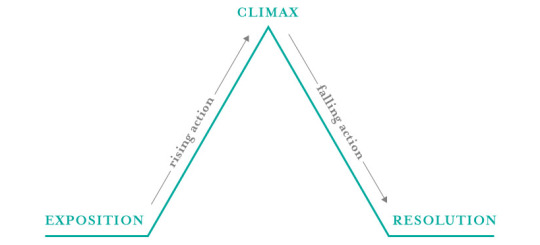
Freytag’s Pyramid
German novelist Gustav Freytag expanded on Aristotle’s concept of plot by adding 2 additional components to the beginning, middle, and end:
Rising action and falling action.
Freytag’s dramatic arc, also known as Freytag’s Pyramid, includes the following:
Exposition. This is the beginning of the story.
Rising action. Once the story has begun, it is important to create tension by raising the stakes. You must raise the stakes along the way and create obstacles of ever-increasing intensity while keeping your eye firmly fixed on your conclusion.
Climax (middle). The pinnacle of your plot.
Falling action. The falling action occurs after the climax but before the end. Falling action frequently depicts the protagonist dealing with the consequences or fallout of the climax. The falling action is when the protagonist ties up loose ends and heads toward the conclusion. It is also referred to as the denouement.
Resolution. This is the end of the story.
Source ⚜ The 3-Act Structure: History & Elements ⚜ A Guide More References: Plot ⚜ Character ⚜ Worldbuilding ⚜ Writing Notes
290 notes
·
View notes
Text




"Embroider My Face and Name", Henrik Edoyan (translated by Tathev Simonyan)
349 notes
·
View notes
Photo









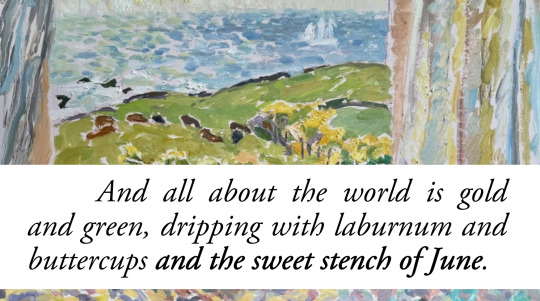
musings on June
1. anne sexton (“the truth the dead know”), 2. anne sexton (“suicide note poem”), 3. mary oliver (“august”), 4. l.m. montgomery (“anne of the island”), 5. morgan parker (“the black saint & the sinner lady & the dead & the truth”), 6. found poems: sylvia plath / peter k. steinberg (“percy key among the narcissi”) artwork by hugo grenville
7K notes
·
View notes
Photo

May 19: Today we celebrate the birth of three great revolutionaries – Ho Chi Minh (b. 1890), Malcolm X (b. 1925) and Yuri Kochiyama (b. 1921).
2K notes
·
View notes
Text
When a Character is Falling in Love but Doesn’t Trust It
Love is terrifying. Especially for characters who’ve been hurt, shut down, or raised to believe vulnerability is weakness. So when they start falling? It doesn’t look like a Disney montage. It looks like panic in slow motion.
✧ They start noticing everything and it unsettles them. The way their voice cracks when they laugh. The way their fingers tap when they’re thinking. These little details burrow in and refuse to leave. And that awareness makes the character feel exposed.
✧ They become hyperaware of their own body. Where their hands are. How close they’re standing. If they’re blushing. It’s like being inside a body that’s betraying them constantly.
✧ They act a little mean. Not because they are mean. But because being cold is safer than being real. Sarcasm, distance, teasing, they use it like armor.
✧ They hate how much they want to share things. They’ll see a funny meme and instinctively want to send it. Then stop. No. Don’t get attached. They want to tell them about a childhood memory, then bite it back. Too personal.
✧ They become inconsistent. Warm one moment, distant the next. Showing up, then pulling away. They’re testing how much of themselves they can reveal before it feels like too much.
✧ They assume the worst. They know it won’t last. That this person will leave. That they’re misreading everything. Love doesn’t feel safe, it feels like a countdown to pain.
✧ They self-sabotage. Pick fights. Flake on plans. Pull away emotionally just to “protect themselves” before it goes wrong. It’s tragic and messy and real.
✧ They notice silence more. What wasn’t said. A delayed reply. A joke that didn’t land. Everything becomes a sign that maybe this love thing was a mistake.
✧ They want to run, but never do. The desire to bolt is constant. But they don’t. Because something about this person is pulling them back, despite every warning bell going off in their head.
✧ They don’t trust the feeling, but they keep falling anyway. And that’s what makes it beautiful. And heartbreaking. Because they don’t want to fall. But they do. And maybe, just maybe, that’s the bravest thing they’ve ever done.
6K notes
·
View notes
Text
the first thing God does after we die is sit us down and cook us dinner
7K notes
·
View notes
Text
Writing Refresher: Verb Tenses
Only 2 tenses are conveyed through the verb alone: present (“sing") and past (“sang").
Most English tenses, as many as thirty of them, are marked by other words called auxiliaries.
Understanding the 6 basic tenses allows writers to re-create much of the reality of time in their writing.
Simple Present: They walk.
Present Perfect: They have walked.
Simple Past: They walked.
Past Perfect: They had walked.
Future: They will walk.
Future Perfect: They will have walked.
12 MAIN TENSES
Simple present: She writes every day.
Present progressive: She is writing right now.
Simple past: She wrote last night.
Past progressive: She was writing when he called.
Simple future: She will write tomorrow.
Future progressive: She will be writing when you arrive.
Present perfect: She has written Chapter 1.
Present perfect progressive: She has been writing for 2 hours.
Past perfect: She had written Chapter 3 before she started Chapter 4.
Past perfect progressive: She had been writing for 2 hours before her friends arrived.
Future perfect: She will have written Chapter 4 before she writes Chapter 5.
Future perfect progressive: She will have been writing for 2 hours by the time her friends come over.
PERFECT TENSES
Usually, the perfect tenses are the hardest to remember. Here’s a useful tip: all of the perfect tenses are formed by adding an auxiliary or auxiliaries to the past participle, the third principal part.
1st principal part (simple present): ring, walk
2nd principal part (simple past): rang, walked
3rd principal part (past participle): rung, walked
In the above examples, will or will have are the auxiliaries.
Most common auxiliaries: be, being, been, can, do, may, must, might, could, should, ought, shall, will, would, has, have, had.
Sources: 1 2 ⚜ More: Writing Basics & Refreshers
181 notes
·
View notes
Text



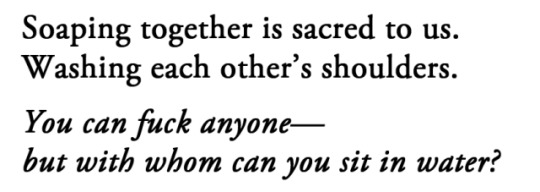






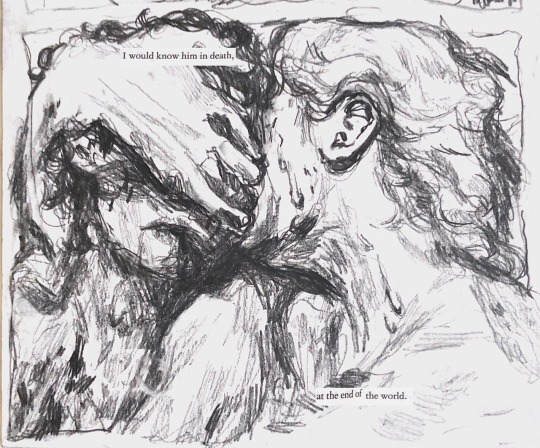



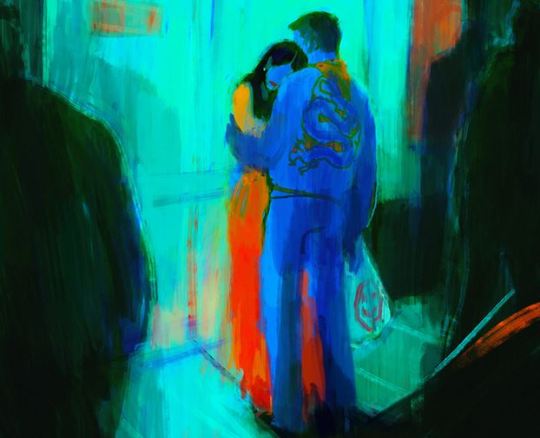


I’ve been the shadow of your shadow
Richard Siken, Peter Wever, Ilya Kaminsky, Margaret Atwood, Ada Limón, Akseli Gallen-Kallela, Richard Siken, @maieste, Madeline Miller, Holly Warburton, Shauna Barbosa, Benjamin Alire Sáenz
19K notes
·
View notes
Text
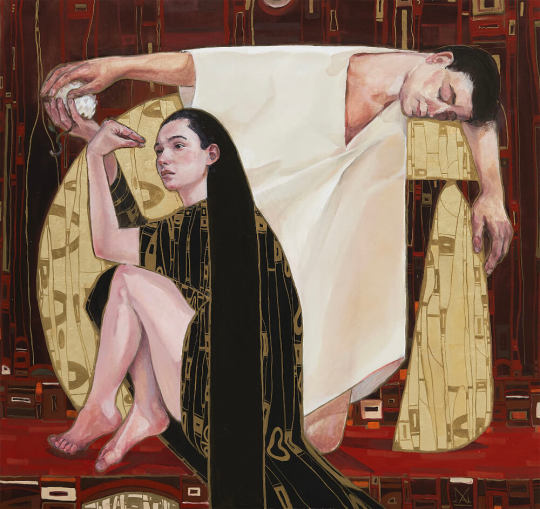
Adam and Eve, Fall, oil painting by Artur Mirzoyan
539 notes
·
View notes
Photo

The Kiaat Tree (Pterocarpus angolensis, also called “bloodwood”) releases red sap when cut. Species of Pterocarpus native to southern Africa, in Angola, Mozambique, Namibia, South Africa, Swaziland, Tanzania, Zaire, Zimbabwe, and Zambia.
26K notes
·
View notes
Text
I remember when I first found out the truth about “Somali pirates” I got chills because of how horrific the truth was and how insanely creepily well the media had twisted the situation. Every single fucking article making it seem like these “pirates” were just after money or something holding innocent people hostage and I never gave it a second thought, why would I? There was no indication that people were trying to legitimately fight off disgusting imperialism that left nuclear waste in their waters, that over 300 people have died from radiation sickness, that Europeans have been stealing Somalia’s seafood because they overfished their own waters and the indigenous fisherman are starving and so these “pirates” emerged to deal with those stealing their country’s natural resources. The truth is enough to make anyone sick to their stomachs.
263K notes
·
View notes
Text
i used to be so good at writing strong, thoroughly-researched, thoroughly-edited essays.
as a kid in hs, my teacher literally came up to me, holding my 40 page essay on the intersection of the European witch hunts and capitalism/exploitation/gender roles (it was supposed to be 7 pages...whoops) and went like "this is literally a master's-degree level thesis. what are you doing?? you could literally use this as your final dissertation in a master's program, what the fuck."
NOW??? NOW?? you'd think I'd be oh so skilled. but alas. i can barely piece together two ideas. adhd skill-regression is so so real. im SOBBING
63K notes
·
View notes
Text

"I won't beg for your love ...", Anna Akhmatova (translated by D. M. Thomas)
746 notes
·
View notes





